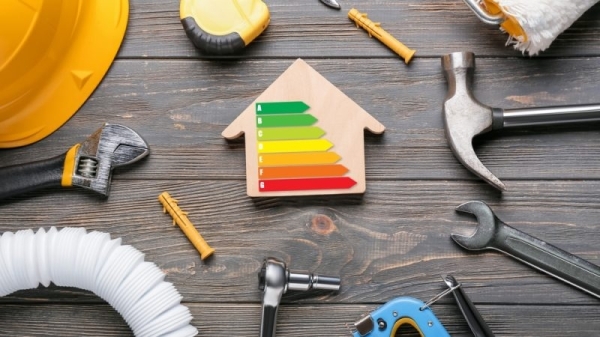Putting people first: why healthy buildings matter

As member states prepare to ramp up the building renovation rate, there is an unprecedented opportunity to hardwire health aspects into the built environment. The brand-new edition of the Healthy Buildings Barometer maps why and how health, energy and climate policies go hand-in-hand.
After more than two years of intense negotiations, the cornerstone of EU buildings policy, the Energy Performance of Buildings Directive (EPBD), is final. The next step is implementation. This is an opportunity we must use to maximise the benefits for not just planet but also people, by putting people – citizens – at the heart of the energy transition.
Why? Because, as the new Healthy Buildings Barometer shows, our buildings have an enormous influence on our health and well-being, which in turn translates into significant financial impacts.
To take just one example, healthier workplaces lead to better performance and every 1% improvement in employee performance could lead to an additional €40 billion a year of gross added value to the European economy.
That’s why we must seize the opportunity of the EPBD and take a systems-thinking approach to integrate occupant health into buildings policy. By doing this, we can maximise the benefits from our building stock for the climate; for the economy in terms of the public purse, jobs and growth; and also, crucially, for a better everyday life for Europeans.
Building blocks for better health
Simply put, the buildings in which we live, work, and play must support good health and well-being.
However, for too many Europeans, that is not the case today: one in four people in the EU live in buildings where indoor air quality falls below national standards, and more than 30 million people live in homes with insufficient daylighting. Inefficient thermal building envelopes make it difficult to maintain an appropriate indoor temperature.
These inadequate living and working environments can trigger a wide range of different health issues: from respiratory and skin problems, headaches and allergies, to serious mental health concerns and life-threatening heat or cold indoor temperatures. Issues such as overcrowding, noise, or lack of light (which many of us experienced when confined indoors during the pandemic) can wreak havoc on mental and physical health.
Case studies demonstrate that healthy buildings are well worth the investment, also in financial terms. In healthy buildings, fewer sick days are taken, absenteeism diminishes, social contacts and mental health improves, and people perform better in the workplace and in classrooms.
The socio-economic benefits are mutually reinforcing: renovating public buildings according to specific health criteria brings an average 11.5% return on investment, plus a 30% reduction in climate impact.
What should happen next?
So how do we realise these benefits? Firstly, we must inspire a variety of stakeholders to align collective action for healthy buildings with the decarbonisation goals of the Paris Agreement.
The 2024 Healthy Buildings Barometer (HBB), developed by BPIE, identifies the specific policy gaps where there are opportunities for integrating health, sustainability, and resilience into building policies. These key policy gaps can be bridged through intervention at the appropriate implementation levels, stages in the buildings life cycle, and considering suitable timelines.
Secondly, we need adequate data to take the pulse of healthy buildings in the European Union and track progress. We found that the availability, quality, and completeness of data is currently in short order.
To effectively track progress towards medium and long-term goals, a comprehensive tool, similar to the EU Buildings Climate Tracker, should be developed at both EU and Member State levels, making healthy buildings a focal point for data collection efforts.
Thirdly and crucially, we must agree on precisely what we mean by a ‘healthy building’. We cannot drive progress otherwise. So that’s what we did in the 2024 HBB, in which we present a framework based on five key criteria.
A healthy building should be (1) designed for human needs; (2) sustainably built and managed; (3) resilient and adaptive; (4) empower people; and, crucially (5) it should improve mental and physical health. Embedding these aspects into renovation strategies ensures that decarbonisation efforts simultaneously improve human health and build resilience.
By addressing the current shortfalls, we can quantify, promote and ultimately provide the benefits of healthy buildings to all. In particular, the implementation of the recast EPBD at a national level presents a tangible opportunity to introduce holistic building measures that simultaneously consider energy efficiency, decarbonisation, and societal well-being.
This means direct benefits for people and aligns with Europe’s commitment to both prioritise public health and decarbonise the built environment, and thus serves the wider public.
Investing in healthier, more efficient and resilient buildings is therefore a triple-win strategy which puts people at the centre of the transformation to a sustainable society.



